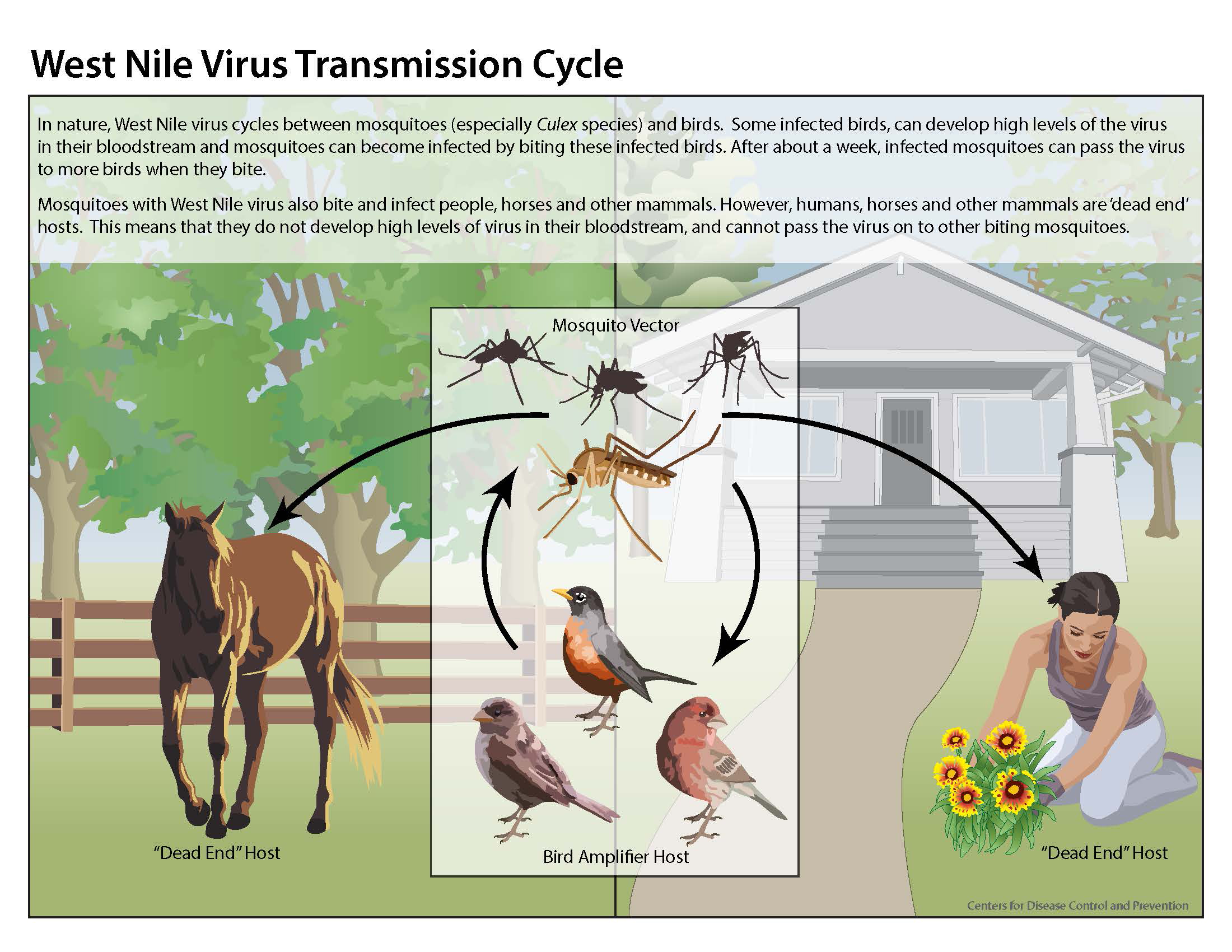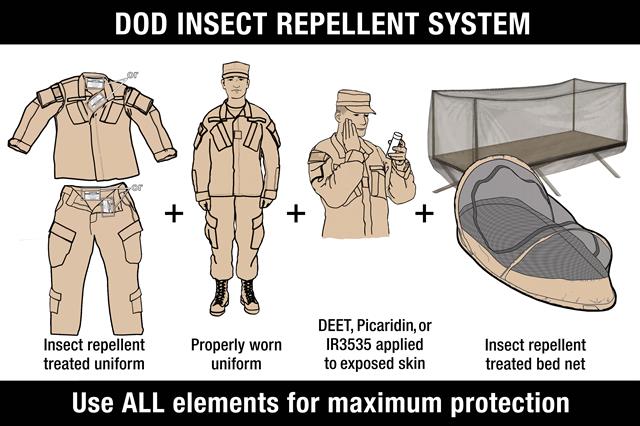West Nile Virus

West Nile Virus Transmission Cycle from CDC 
How do people become infected with West Nile virus?
People and horses contract WNV through the bite of an infected mosquito, particularly Culex mosquitoes, which are common around human habitats. These mosquitoes breed in standing water and are most active at dusk and dawn. WNV is maintained in nature by a cycle between mosquitoes and common back-yard birds. People and horses become infected by accident, and are not a part of the transmission cycle in nature. However, during an average year, hundreds of human cases of WNV are reported.
WNV has also been transmitted through blood transfusions, organ transplants, breastfeeding and during pregnancy from mother to baby in a very small number of cases. WNV is NOT transmitted from person-to-person. For example, you cannot get the virus from touching or kissing a person who has the disease or from a health care worker who has treated someone with WNV.
Can you get West Nile virus directly from birds or other animals?
There is no evidence that a person can get WNV from handling either live or dead infected animals. Always wear gloves when handling dead animals, including dead birds, and use double plastic bags when disposing of them in the trash as a general precaution.
What are the symptoms of West Nile virus infection?
Most people infected with WNV will not experience any symptoms at all. Approximately 25% of infected people will have mild, flu-like symptoms between 3 and 14 days after they are bitten by an infected mosquito. Severe neuroinvasive disease affecting the nervous system involving encephalitis (an inflammation of the brain) occurs mainly with the elderly and those with weakened immune systems. Neuroinvasive disease is marked by rapid onset of severe headache, high fever, stiff neck, disorientation, muscle weakness, paralysis, coma and even death. Neuroinvasive disease occurs in less than 1% of cases in the US; however, localized outbreaks have resulted in much higher percentages. A 2021 outbreak in Maricopa County, AZ resulted in 1,487 human cases with 64% nuroinvasive disease (956) and 6.8% case fatality rate (101). Diagnosis is based on tests of blood or spinal fluid.
What is the treatment for West Nile virus infection?
Seek medical attention if you experience the symptoms described above and have been in an area with WNV activity. No human vaccine or specific antiviral treatment is available for WNV infection. Treatment is mainly supportive, directed at relieving the symptoms and preventing complications. Although mild WNV illness improves on its own, pregnant women and nursing mothers should talk to their doctor if they develop symptoms that could be WNV.
What can I do to reduce my risks of becoming infected with West Nile virus?
The best way to prevent diseases spread by mosquitoes is to protect yourself from mosquito bites by using the DoD Insect Repellent System. It incorporates insect repellent on the uniform, DEET, picaridin, or IR3535 repellent on exposed skin, a properly worn uniform, and sleeping inside a insecticide-treated bed net.
Select the image for more information on the DoD Insect Repellent System.

